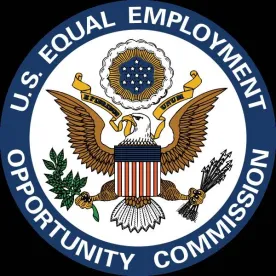The Equal Employment Opportunity Commission (“EEOC”)—the agency tasked with enforcing federal labor laws—was deputized by Congress in 1972 with authority to bring lawsuits against employers for violating anti-discrimination laws and retaliating against employees. Since then, the agency has made a concerted and aggressive effort to challenge, among other things, standard clauses in separation agreements that have the potential to chill former employees’ participation in legal actions against their former employers, including non-cooperation and covenant not to sue clauses. This concern is especially salient in the age of COVID-19, where many employers are using separation agreements at a breakneck pace due to the unprecedented rate of employee layoffs, and EEOC enforcement actions may be just around the corner.
While the agency’s efforts have largely failed to date, the EEOC’s current Strategic Enforcement Plan suggests that the agency intends to bring further enforcement actions against employers that offer separation agreements conditioning receipt of severance pay on prohibitions that disincentivize or prohibit employee participation in legal actions. Moreover, the EEOC—which currently has a Republican majority—will likely become more employee-friendly when Trump-appointed Commissioner Janet Dhillon’s term expires in July 2022. In light of the agency’s efforts, employers should carefully examine their separation agreements to ensure they pass EEOC muster.
Separation Agreements: What Is the EEOC’s Position?
While separation agreements typically differ from employer to employer, common clauses include non-cooperation (prohibiting employees from cooperating with any person or entity in bringing lawsuits in state or federal court) and a covenant not to sue (prohibiting employees from filing a lawsuit, charge, or complaint against their former employer). For purposes of this article, these common clauses will be referred to as “Waiver Clauses.”
The EEOC is generally tolerant of bare-bones separation agreements. See EEOC Q&A-Understanding Waivers of Discrimination Claims in Employee Severance Agreements, Appendix B. However, the agency—which relies heavily on former employees to come forward and assist the agency in its enforcement actions against employers—takes the position that Waiver Clauses “deprive the [EEOC] of important testimony and evidence needed to determine whether discrimination has occurred” and constitute “unlawful retaliation in violation of federal employment rights statutes.” Accordingly, the EEOC has brought countless actions against employers that condition receipt of severance benefits on former employees accepting Waiver Clauses that purport to limit or disincentivize former employees from engaging in, or assisting with, litigation against employers.
The EEOC’s Evolving Efforts to Invalidate Waiver Clauses in Separation Agreements
At first, the EEOC attacked Waiver Clauses on the grounds that their mere inclusion in separation agreements constituted per se retaliation. In the ‘80s and ‘90s, the EEOC’s theory gained traction in the courts. In 1987, the Fifth Circuit Court of Appeals held that “[a] waiver of the right to file a charge is void as against public policy.” See E.E.O.C. v. Cosmair, Inc., L’Oreal Hair Care Div., 821 F. 2d 1085, 1090 (5th Cir. 1987). Then, in 1996, the First Circuit Court of Appeals enjoined non-cooperation clauses which prohibited employees from communicating with the EEOC, noting that “an employee’s right to communicate with the EEOC” is “not a right that an employer can purchase from an employee.” E.E.O.C. v. Astra U.S.A., Inc., 94 F.3d 738, 744-45 n.5 (1st Cir. 1996). Riding its wave of success, the EEOC issued guidance in 1997 stating that employers “may not interfere with an individual’s protected right . . . to file a charge, testify, assist, or participate in any manner in an EEOC investigation, hearing, or proceeding.”
However, the tide began to change when, in 2006, the Sixth Circuit Court of Appeals disagreed with the agency’s per se retaliation theory. See E.E.O.C. v. SunDance Rehabilitation Corp., 466 F.3d 490, 500-501 (6th Cir. 2006) (holding that mere inclusion of clause in separation agreement conditioning severance payment on promise from terminated employee not to file charges with EEOC did not make the agreement “in and of itself retaliatory.”). Subsequent court decisions demonstrated that the EEOC’s per se retaliation theory was no longer viable. See, e.g., E.E.O.C. v. Cognis Corp., No. 10–CV–2182, 2012 WL 1893725, at *6-7 (C.D. Ill. May 23, 2012) (holding that last chance agreement threatening termination if employees undertook statutorily protected activity did not constitute per se retaliation).
In response, the EEOC altered its strategy. Instead of arguing that unlawful clauses in separation agreements constituted per se retaliation, the agency began to argue that employers’ inclusion of Waiver Clauses that could chill former employees from filing charges or participating in agency proceedings constitutes a pattern or practice of “resistance” to the full enjoyment of rights secured by Title VII. However, like its per se retaliation theory, the agency’s “resistance” theory has largely failed in the courts. For instance, in 2014, the Northern District of Illinois noted that “‘resistance’ . . . requires some retaliatory or discriminatory act.” E.E.O.C. v. CVS Pharm., Inc., 70 F. Supp. 3d 937, 939 n.2 (N.D. Ill. 2014) (granting summary judgment in favor of employer in case challenging, among other things, use of covenant not to sue clause on grounds that EEOC failed to conciliate claim). In other words, the employer’s inclusion of a Waiver Clause in a separation agreement did not, without more, violate Title VII. The following year, the Seventh Circuit Court of Appeals affirmed the district court’s decision, confirming that Title VII “does not create a broad enforcement power for the EEOC to pursue non-discriminatory employment practices that it dislikes[.]” E.E.O.C. v. CVS Pharm., Inc., 809 F.3d 335, 341 (7th Cir. 2015) (“conditioning benefits on promises not to file charges with the EEOC is not enough, in itself, to constitute ‘retaliation’ actionable under Title VII.”).
Despite the myriad setbacks it has faced in court, the EEOC continues in its quest to invalidate Waiver Clauses it views as prohibitive in separation agreements. Indeed, the agency’s FY17-22 Strategic Enforcement Plan specifically notes that the EEOC will continue to “focus on policies and practices that limit substantive rights, discourage or prohibit individuals from exercising their rights under employment discrimination statutes, or impede EEOC’s investigative or enforcement efforts” by targeting, among other things, “waivers or releases that limit substantive rights, deter or prohibit filing charges with EEOC, or deter or prohibit providing information to assist in the investigation or prosecution of discrimination claims.”
What Should Employers Do?
In light of its current Strategic Enforcement Plan and its ever-changing theories to undermine Waiver Clauses within separation agreements that allegedly disincentivize employee participation in litigation against former employers, the EEOC will, in all likelihood, continue its efforts to challenge Waiver Clauses in separation agreements. Moreover, the EEOC—which currently has a Republican majority—will likely become more employee-friendly when Trump-appointed Commissioner Janet Dhillon’s term expires in July 2022. Accordingly, employers should take stock of their separation agreements on a micro and macro level to ensure compliance with the law and minimize the risk of EEOC challenges to the lawfulness of those agreements. The following commonplace clauses warrant particular attention.
Non-Cooperation Clauses. These clauses, which generally prohibit employees from cooperating with any person or entity in bringing lawsuits in state or federal court, are often included in separation agreements to stave off future litigation. The EEOC has taken the position that these clauses “interfer[e] in an employee’s protected right to testify, assist, or participate in any investigation, proceeding, or hearing” brought under Title VII. See Complaint, E.E.O.C. v. Eastman Kodak, No. 6:06-cv-06489-CJS (W.D.N.Y. Sept. 29, 2006); see also EEOC Q&A-Understanding Waivers of Discrimination Claims in Employee Severance Agreements, n.12 (“Agreements that prevent employees from cooperating with the EEOC interfere with enforcement activities because they deprive the Commission of important testimony and evidence needed to determine whether discrimination has occurred.”).
To avoid enhanced EEOC scrutiny, employers should ensure that non-cooperation clauses carve out former employees’ ability to cooperate with the EEOC and participate in agency proceedings. Indeed, the Seventh Circuit Court of Appeals in CVS tacitly approved Waiver Clauses that have the potential to discourage participation, provided the agreements contain such carve-outs. See CVS Pharm., Inc., 809 F.3d at 341, n.4 (noting in dicta that separation agreement with Waiver Clauses did not discourage employees from participating in EEOC proceedings where agreement specified that “‘nothing’ precludes the signatory from ‘participat[ing] in a proceeding with any appropriate federal, state, or local government agency enforcing discrimination laws[.]’”). Of course, the EEOC has shown time and again that it will target these types of Waiver Clauses even in the face of contrary, binding authority. While the CVS dicta is persuasive, the EEOC is likely to argue it is not definitive.
Covenant Not to Sue Clauses. These clauses, which generally prohibit employees from filing a lawsuit, charge, or complaint against their former employer (and related entities), also help employers stave off future litigation. Notably, the EEOC has flip-flopped on the legality of including covenant not to sue clauses in separation agreements. In 2006, the EEOC entered into a consent decree with East Kodak Company—the photography company commonly known as Kodak—granting the employer permission to include covenant not to sue clauses in future separation agreements, provided the covenants were coupled with a carve-out provision specifically permitting employees to file charges with the EEOC. See Consent Decree at 3-4, E.E.O.C. v. Eastman Kodak, No. 6:06-cv-06489-CJS (W.D.N.Y. Oct. 11, 2006). But in 2013, the EEOC reversed course, bringing suit against an employer for its inclusion of covenant not to sue clauses in its separation agreements, despite containing carve-out provisions permitting employees to file charges with the EEOC. See Complaint, E.E.O.C. v Baker & Taylor, Inc., No. 1:13-cv-03729 (N.D. Ill. May 20, 2013). Ultimately, the Seventh Circuit Court of Appeals in CVS noted that covenant not to sue clauses containing carve-outs allowing former employees to participate in proceedings and cooperate with agency investigations do not obstruct the employee’s ability to file charges with the EEOC. See CVS Pharm., Inc., 809 F.3d at 341, n.4. However, employers should note the risks inherent in these clauses (namely, the possibility of EEOC enforcement actions) and make sure to include carve-outs permitting former employees to participate in proceedings and cooperate with the EEOC and other related state and federal agencies.
Bottom Line
The EEOC has taken an increasingly aggressive stance against waiver clauses in separation agreements that it interprets as “imped[ing] [the] EEOC’s investigative or enforcement efforts.” Moreover, we expect a ramp-up in EEOC enforcement actions targeting these types of clauses in the near future. Accordingly, employers should be aware of these risks, carefully review their separation agreements, and take stock of clauses that have garnered attention from the EEOC in recent years.




 />i
/>i

